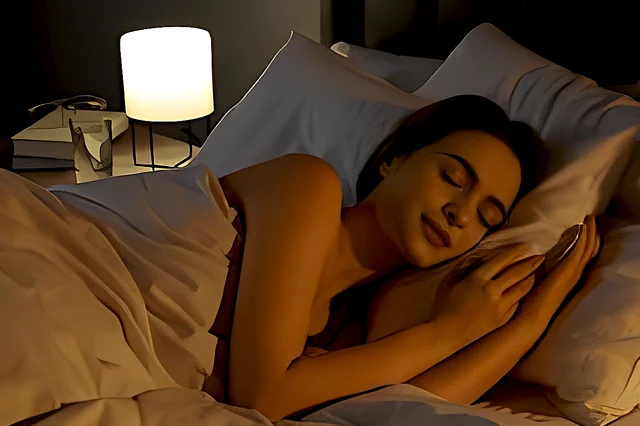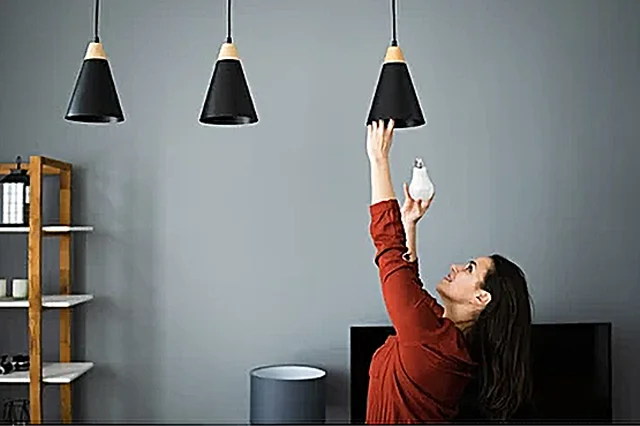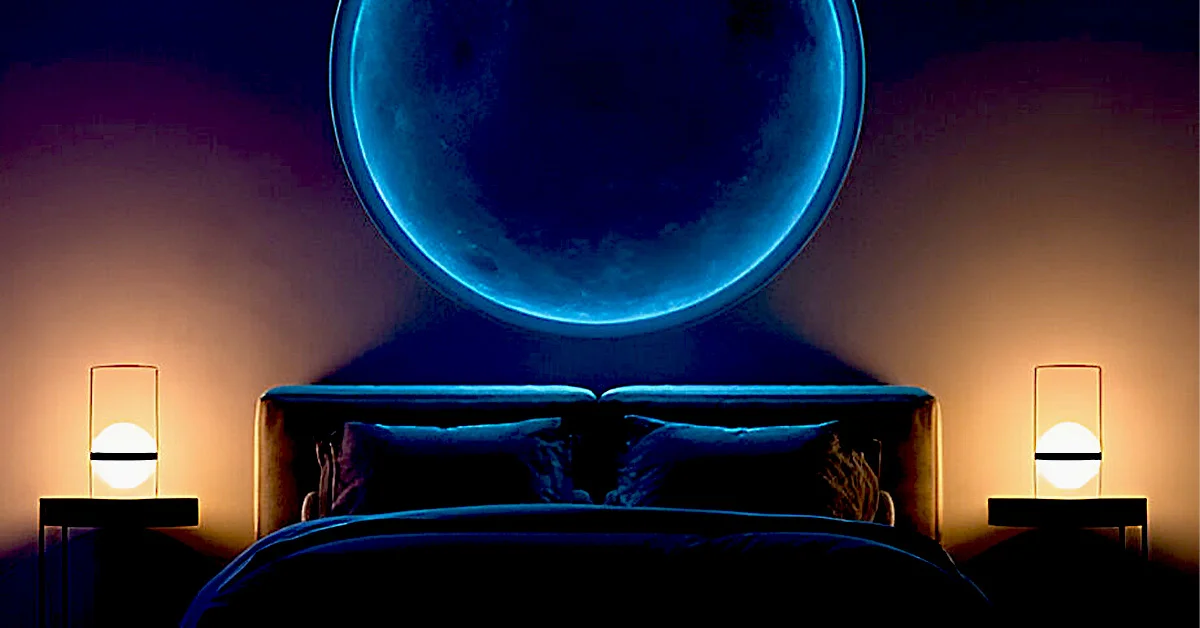Lighting has a profound impact on our mood, creativity, and well-being. Different types of lighting can create different atmospheres and emotions in your home, offices, and other spaces.

How Light Influences Our Circadian Rhythms
As I mentioned at the start, light is one of the main factors that affect your mood and creativity .
Light is essential for your circadian rhythms, which are the natural cycles of sleep and wakefulness that regulate your biological clock.
Light helps you to synchronize your internal clock with the external environment by signaling day or night.
When it is dark outside, your body produces Melatonin, a hormone that makes you feel sleepy and ready for bed. When it is bright outside, your body produces Cortisol. It is a hormone that makes us feel alert and energized.
These hormones affect our mood, memory, learning, metabolism, immune system, and many other aspects of our health.
Therefore, choosing the suitable lighting for your space can help you Maintain or improve your circadian rhythms. For example:
- If you want to sleep better at night or wake up earlier in the morning, you should avoid bright light before bedtime or use dimmer lights in your bedroom.
- If you want to stay focused or productive during the day or night time work hours, you should use bright light in your workspace or office.
- If you want to relax or unwind after a long day, use warm or cozy lighting in your living room or bedroom.
How Colors Of Light Affects Our Emotions
Another factor that affects your mood & creativity is the color of light. Color has different meanings and associations for different people, cultures, and contexts.
Color can influence how you perceive, interpret, and respond to various stimuli, such as objects, images, words, sounds, etc.
Color can also affect your emotions by triggering various physiological responses in your body. For example:

Red
Red color can stimulate appetite, increase blood pressure, raise heart rate, enhance alertness, reduce pain, etc.
Blue
Blue color can calm down your nerves, lower blood pressure, slow down heart rate, induce relaxation & improves your mood.
Green
Green color can promote growth, balance hormones, reduce stress, &
enhance concentration.
Therefore, the right color for your space can help you create the desired mood & atmosphere. For example:
- If you like to feel more energetic or passionate about some creative project or task, you should use red color in your studio or workshop.
- If you want to feel more peaceful or serene about some personal goal or a challenge, use the blue color in your meditation room or bedroom.
- If you want to feel more natural or harmonious about environmental issues or causes, you should go with green color in your garden or office.
How Different Types Of Lighting Affect Our Perception
A third factor that affects our mood & creativity is the type of lighting we use.
The three main types of lighting are natural light, artificial light, cool light & warm light.
Natural Light
Natural light comes from natural sources like the sun, moon & stars, etc.
It has no color temperature (the measure of how warm or cool it appears) but it varies depending on the time, season, weather & location.
Artificial Light
Artificial light comes from various sources like lamps, bulbs, candles, etc.
It has different color temperatures ranging from
- Warm white (2700K),
- Yellowish (3000K),
- Orange (4000K),
- Red (5000K),
- Blue (6000K),
- White (8000K) etc.

Cool Light
It comes from sources with low color temperatures, like fluorescent tubes, LED lights, halogen bulbs, etc.
Cool light creates a bright white glow that reduces eye strain but makes everything look dull, flat & boring.
Warm Light
Warm light comes from sources with high color temperatures like incandescent bulbs or halogen bulbs.
It creates a soft yellowish glow that enhances eye comfort & makes everything look cozy, inviting & comfortable.
Therefore. choosing the right type of lighting for your space can help you create the desired perception effect. For example:
- If you want to feel more connected to nature outside, consider using natural light as much as possible in your windows & doors.
- If you want to feel more modern, sophisticated & stylish, try artificial cool lights like LED lights, recessed lights, pendant lights, or track lights.
- For a more traditional, classic & elegant feel, use artificial warm light such as incandescent bulb chandeliers.
How Lighting Styles Affect Your Personality
A fourth factor that affects your mood is the lighting style you use.
There are many lighting styles, like ambient, task, accent, decorative, etc.
Each lighting style has a different purpose, function, and effect on your space and ourselves.
Let’s explore some of these lighting styles,
Ambient Lighting
Ambient lighting is the general lighting that provides overall illumination for a space.
It creates a comfortable and uniform brightness that allows us to see and move around comfortably.
Ambient lighting can affect your personality by making you feel more relaxed, calm, and peaceful.

Task Lighting
It is a specific lighting that provides focused illumination for a particular activity or task, such as reading, writing, cooking, etc.
It creates a high level of contrast and clarity, that allows you to perform your tasks efficiently and accurately.
Task lighting makes you feel more productive, attentive, and confident.
Accent Lighting
It is directional lighting to highlight a specific feature or object in a space, such as a painting, a sculpture, a plant, etc.
It creates a dramatic and artistic effect that draws your attention and interest.
Accent lighting can make you feel more creative, curious, and inspired.
Decorative Lighting
Decorative lighting adds beauty and charm to a space, such as a chandelier, a lampshade, a or a candle.
It creates a festive and cheerful atmosphere that enhances your mood and enjoyment.
Decorative lighting can affect your mind by making you feel more happy, playful, and expressive.
So, the right lighting style for your space can help you create the desired personality & impression. For example:
- If you want to feel more cozy and intimate in your space, you should use ambient lighting with warm colors and soft textures.
- If you like to feel more professional and efficient, use task lighting with cool colors and sharp shapes.
- If you want to be more artistic and adventurous, use accent lighting with bright colors and bold patterns.
- If you want to feel more festive and fun , use decorative lighting with sparkling colors and whimsical designs.
How Placement Of Light Affects Your Behavior
The fifth factor that affects your mood, creativity, and well-being is the placement of lighting.
There are many ways to place lighting in your home, such as ceiling, wall, floor, table, etc.
Each placement has a different impact on you and your space.

Ceiling Lighting
It is the lighting, mounted or suspended from the ceiling of a room. It creates a downward and uniform light distribution that covers a large area.
Ceiling lighting can affect your behavior by making you feel more secure, stable, and grounded.
Wall Lighting
This type of lighting is attached or fixed to the wall of a space. It creates a sideways and asymmetrical distribution of light that adds depth and dimension.
Wall lighting can make you feel more balanced, harmonious, and aligned.
Floor Lighting
the lighting placed or standing on the floor creates an upward and concentrated distribution of light that draws attention and focus.
Floor lighting can affect our behavior by making us feel more alert, active, and motivated.
Table Lighting
The lighting placed or resting on the table creates a horizontal and localized distribution of light that creates intimacy and warmth.
Table lighting can make you feel more cozy & friendly.
Layered Lighting
A balanced combination of warm and cool lighting is called layered lighting.
You can use it to create a balanced and adaptable environment.
Layered lighting provides the freedom to adjust the light according to your needs.
Dimming Options
Installing dimmer switches can provide flexibility in controlling the intensity of the light, allowing you to customize the atmosphere as desired.
Therefore, the proper placement of lighting for your space can help you create the desired behavior outcome. For example,
- If you like to feel more safe and comfortable, use ceiling lighting with diffused and soft light.
- If you want to feel more calm and peaceful, you should try wall lighting with indirect and gentle light.
- If you want to feel more energetic and enthusiastic, you should use floor lighting with direct and bright light.
- To feel more warm and inviting, you should use table lighting with ambient and cozy light.
Closing Remarks
So, lighting is a powerful and influential factor that affects your mood, creativity, and well-being.
Therefore, choosing the best lighting for your space is not only a matter of aesthetics but also a matter of psychology.
I hope you enjoyed reading this blog post and learned something new about the psychological effects of lighting.
If you have any questions, comments, or feedback, please feel free to leave them below. Thank you for your attention. Have a great day! 😊




